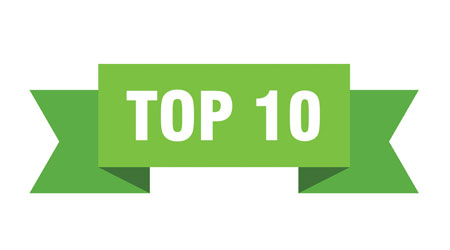
The U.S. Green Building Council (USGBC) announced the ranking of its annual Top 10 States for LEED, with Illinois once again topping the list and demonstrating leadership in green building. Illinois certified 3.16 square feet of building space per person under LEED in 2021. LEED is the world’s most widely used green building program and was created by USGBC as a leadership standard defining best practices for healthy, high-performing green buildings.
“Amidst the challenges of 2021, governments, companies and other organizations committed to taking bold actions to protect the climate, their employees and their communities,” says Peter Templeton, president and CEO, USGBC. “Transitioning our buildings to be healthier and more sustainable is essential to meeting these commitments, and we’re proud to recognize states where that work is well under way.”
In 2021, the top 10 states, plus the District of Columbia, certified 1,105 projects and more than 247 million gross square feet under LEED. Washington, Massachusetts, Colorado and Virginia round out the top five, and Utah made an appearance on the list for the first time since 2015.
Despite Washington, D.C., not appearing in the official top 10 list because of its status as a federal territory, it consistently leads the nation in LEED-certified square footage per capita. In 2021, the nation’s capital certified 29.46 square feet of space per resident across 103 green building projects.
The full rankings are as follows, for certified gross square footage per capita:
1. Illinois: 3.16
2. Washington: 2.84
3. Massachusetts: 2.64
4. Colorado: 2.34
5. Virginia: 2.149
6. Colorado: 2.143
7. Maryland: 1.95
8. Oregon: 1.81
9. Utah: 1.48
10. Nevada: 1.42
Notable projects that were certified in 2021 include:
- Hines VC Project 20 in Chicago achieved LEED Gold; Hines has over 90 million square feet that have certified, pre-certified or registered under LEED.
- Union Station in Seattle received LEED Platinum certification and was the highest Platinum-level project of 2021 in Washington state.
- Harvard University Science and Engineering Complex in Allston, Mass., received LEED Platinum certification and was also a regional award recipient at USGBC Live for outstanding design and long-term sustainability focus.
- The Denver Water OCR campus of eight buildings achieved LEED certification at various levels: LEED Platinum (1), LEED Gold (5) and LEED Silver (2)
- The Government Services Administration facility in Winchester, Va., achieved LEED Gold under LEED v4, as well as SITES v2 Silver certification and Guiding Principles Compliance, becoming the first project to certify across all three programs
The 2021 World Green Building Trends report from Dodge Data shows that green building remains a global priority and commitment to sustainable building is strong. LEED provides a framework for designing, constructing and operating buildings that are cost-effective, reduce greenhouse gas emissions, use fewer resources and support human health. The overall growth in LEED certification reflects the increased global adoption of corporate and institutional ESG goals and reporting.
“Green building is projected to continue its rapid growth in 2022, and USGBC remains focused on supporting further market transformation and innovation,” Templeton adds. “It is particularly encouraging to see policy leadership at all levels of government promoting green building practice and performance—from the federal Infrastructure Investment and Jobs Act to local code enhancements. USGBC will continue to support efforts in all sectors to accelerate progress and increase accountability for creating sustainable, healthy, resilient and equitable buildings and communities.”
USGBC calculates the top 10 list based on 2020 U.S. Census data, using per capita figures to allow for a fair comparison of the level of green building taking place among states with significant differences in population and number of overall buildings. The data includes commercial and institutional green building projects certified to LEED between Jan. 1 and Dec. 31, 2021.

 The Down and Dirty on Cleaning in Virus Season
The Down and Dirty on Cleaning in Virus Season How Surfactant Use is Expanding in Commercial Cleaning
How Surfactant Use is Expanding in Commercial Cleaning